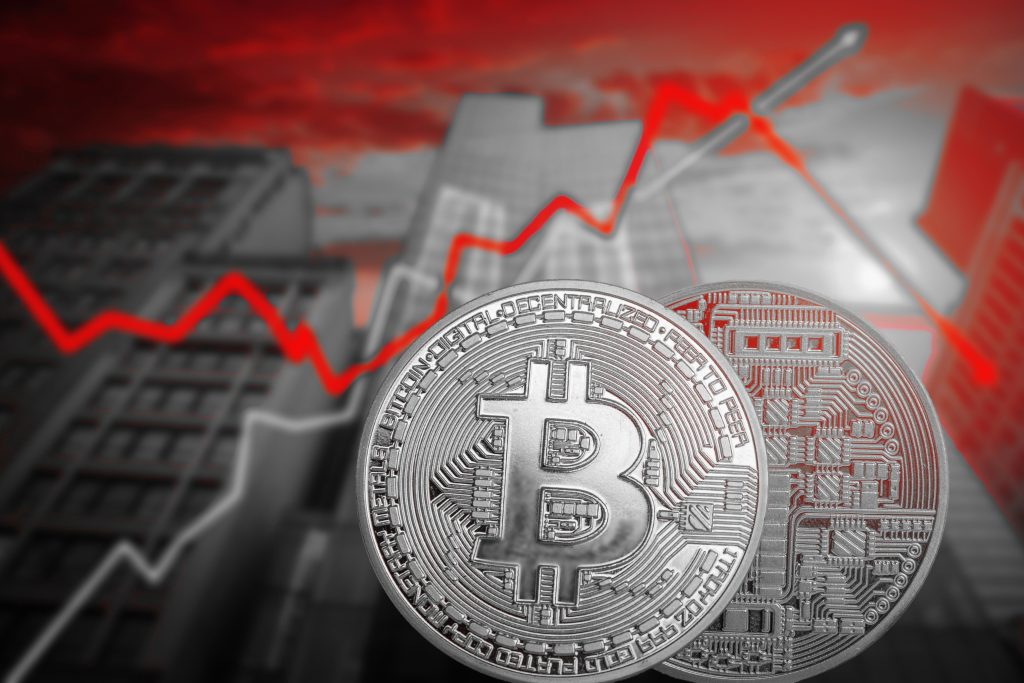Understanding The Risks And Rewards Of Yield Farming
Dive into the world of crypto yield farming: discover how to earn passive income with potential risks and rewards. Ready to learn more?

Are you intrigued by the concept of yield farming but unsure of the potential risks and rewards involved? Yield farming has gained significant attention in the world of cryptocurrency, but it’s essential to have a clear understanding of the potential outcomes before diving in.
Cryptocurrency has revolutionized the financial landscape, offering new and innovative ways to earn passive income. Yield farming, also known as liquidity mining, is one such method that has gained popularity. It involves lending or staking cryptocurrencies to earn additional tokens as rewards. However, the high potential returns come with inherent risks that every participant should be aware of.
Before you jump into the world of yield farming, it’s crucial to educate yourself about the potential risks and rewards involved. Understanding the intricacies of this practice will empower you to make informed decisions and navigate the volatile cryptocurrency market with confidence. In this article, we will explore the various factors you should consider before embarking on your yield farming journey.
The Benefits of Yield Farming
Yield farming, also known as liquidity mining, has become an increasingly popular practice in the world of crypto and DeFi. This innovative approach allows users to earn passive income by providing liquidity to decentralized finance protocols. By participating in yield farming, individuals can take advantage of a range of benefits, including attractive interest rates, additional token rewards, and the potential for high returns on investment.

Generating Passive Income from Crypto Assets
Generating passive income from crypto assets can be achieved through various methods such as yield farming, staking, lending, and liquidity provision.
Yield farming involves lending cryptocurrencies to decentralized finance (DeFi) protocols in exchange for interest or fees. Staking allows users to earn rewards by holding and validating transactions on a blockchain network. Lending involves providing liquidity to trading platforms and earning interest on the assets lent. Liquidity provision involves adding funds to a liquidity pool, which enables traders to make transactions, and earning a share of the trading fees.
Each method offers potential benefits such as additional income, risk mitigation through diversification, and revenue expansion in the ever-changing crypto market. Furthermore, by contributing assets to the liquidity and overall health of the DeFi ecosystem, individuals can also receive rewards and help to maintain a sustainable and thriving financial infrastructure.
Exploring New Opportunities in Decentralized Finance (DeFi)
The decentralized finance (DeFi) space continues to see exciting new opportunities, with the introduction of innovative protocols, platforms, and projects. One notable development is the rise of new decentralized exchange (DEX) protocols like Uniswap, SushiSwap, and Curve Finance, which provide users with efficient trading and liquidity provision opportunities. Additionally, the emergence of yield farming and liquidity mining has revolutionized the DeFi landscape by allowing users to earn passive income by providing liquidity to various DeFi platforms.
Moreover, the introduction of governance token models has empowered users to participate in the decision-making process of their favorite DeFi projects. This trend has led to the increasing adoption of decentralized autonomous organizations (DAOs) and community-driven governance models within the DeFi ecosystem. Overall, these advancements have opened up a myriad of ways for users to participate in decentralized finance, from earning rewards through yield farming to actively shaping the direction of DeFi projects through governance participation. As the industry continues to evolve, these new opportunities are set to further shape the future of decentralized finance.
Access to Unconventional Investment Options
Investors can access unconventional investment options in the cryptocurrency market through various platforms and services. StaaS (Staking as a Service) allows investors to earn passive income by staking their cryptocurrencies on a platform. Liquidity provision involves providing liquidity to decentralized exchanges, earning fees in return. PoS (Proof of Stake) mining allows investors to earn rewards by holding and staking their cryptocurrencies. Crypto savings accounts offer interest on deposited cryptocurrencies, similar to traditional savings accounts. Passive income funds provide a diversified portfolio of crypto assets, managed by professionals to generate passive income.
These alternative strategies offer several benefits compared to yield farming, such as lower risk and more predictable returns. StaaS, liquidity provision, and PoS mining provide passive income without the complexity and high volatility often associated with yield farming. Crypto savings accounts and passive income funds offer a more stable and managed approach to earning passive income in the cryptocurrency market. With less risk and more sustainable returns, these unconventional options provide investors with a reliable way to generate passive income from their cryptocurrency holdings.
Potential Challenges with Yield Farming
Yield farming has gained significant popularity in the decentralized finance (DeFi) space, offering investors the opportunity to earn high yields by providing liquidity to various cryptocurrency platforms. However, this innovative investment strategy comes with its own set of potential challenges that investors need to be aware of.
Smart Contract Risk and Exploits in DeFi Protocols
Smart contracts in DeFi protocols come with inherent risks, including vulnerabilities, hacking, and potential fraud. These risks can be exploited by malicious actors to manipulate the code, steal funds, or disrupt the protocol’s operations. Vulnerabilities in smart contracts can lead to unauthorized access to funds or the manipulation of protocol functions. Hacking attempts can result in significant financial losses for users and the protocol itself, while fraud can undermine the trust and integrity of the DeFi ecosystem.
Due diligence is crucial when selecting a yield farming protocol to mitigate these risks. Prioritizing protocols with a history of security audits, a strong development team, and open-source code can help reduce the likelihood of encountering smart contract vulnerabilities. Examples of previous smart contract vulnerabilities, such as the flash loan attack on Harvest Finance in 2020, demonstrate the real impact of these risks on DeFi protocols. It’s essential for users and investors to stay informed about these risks and take proactive measures to protect their assets.
Regulatory Risks and Tax Implications of Yielding Tokens
Yield farming in the largely unregulated decentralized finance (DeFi) space poses potential regulatory risks and tax implications for participants. Without legal protection, participants are exposed to risks such as fraudulent activities, lack of recourse in case of disputes, and the potential impact of changes in regulatory policies. Key factors to consider when addressing these risks and implications include the need for potential legal protection for participants, the impact of regulatory policies on the value and stability of DeFi projects, and the potential tax liabilities associated with yield farming such as income taxes on the yield generated, capital gains taxes on the sale of farming assets, and potential reporting requirements for decentralized finance activities. It is important for participants to stay informed about the evolving regulatory landscape and seek professional advice to navigate potential regulatory risks and tax implications in the DeFi space.
Trading Fees on Centralized Exchanges (CEX) and Decentralized Exchanges (DEX)
Centralized exchanges (CEX) typically charge trading fees for using their platforms, which can vary based on the volume and type of trade. In addition, banks and financial companies may charge additional fees for transferring and converting fiat currency to cryptocurrency. On the other hand, decentralized exchanges (DEX) operate on the blockchain and do not have intermediary fees. In the decentralized finance (DeFi) system, there are no fees for using the platform.
Advantages of trading on CEX include access to a wide range of trading options and liquidity, but the disadvantage is the higher fees associated with using their services. DEX, on the other hand, offers lower fees and increased security due to the lack of a central authority, but may have lower liquidity and a limited range of trading options. DeFi provides the advantage of zero fees and complete control over assets, but it may lack user-friendly interfaces and may not be as regulated as CEX. Overall, the choice between CEX and DEX depends on the user’s preferences for fees, security, and trading options.
Liquidity Issues, Inflation, and Volatility in Crypto Markets
Liquidity issues in the crypto market can lead to price slippage and difficulty in buying or selling assets. To manage this risk, investors should research token liquidity before making any investment, focusing on highly liquid assets with a high trading volume.
Inflation can erode the value of cryptocurrencies over time, leading to decreased purchasing power. Diversifying investments across different types of assets, such as stocks, bonds, and cryptocurrencies, can help mitigate the impact of inflation on a portfolio.
Volatility in the crypto market can lead to sudden and large price swings, posing a risk for investors. Analyzing market volatility can help identify arbitrage opportunities, where investors can profit from price differences across different exchanges.
Market cycles can impact token prices and interest rates, influencing investment decisions and portfolio performance. Understanding market cycles and their potential impact is crucial for managing risk in the crypto market and making informed investment decisions. Risk management strategies such as setting stop-loss orders and diversifying across different assets can help investors navigate the challenges posed by liquidity issues, inflation, and volatility in the crypto market.

Conclusion
In conclusion, crypto yield farming offers the potential for high returns within the decentralized finance (DeFi) ecosystem. However, entering this space requires a thorough understanding of the associated risks and a cautious approach. Due diligence is essential for anyone considering yield farming, as it involves interacting with complex smart contracts and liquidity pools. Potential returns can be lucrative, but they come with the risk of impermanent loss, smart contract vulnerabilities, and market volatility. It’s important for individuals to carefully research and evaluate the projects and platforms they plan to engage with, as well as to stay updated on the latest developments and best practices in the DeFi space. With the right knowledge and approach, crypto yield farming can be a rewarding investment opportunity, but it’s crucial to proceed with caution and take the time to fully grasp the intricacies of this evolving ecosystem.







